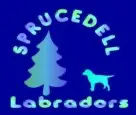Type, a positive approach
In the most simplistic terms, type is about the shape, size and relationship to each other of the bones that support a Labrador and the soft tissue that holds the structure together . Clearly, this statement describes conformation and some people make a distinction between conformation and type, but the make of an animal, in the very general sense described here, dictates its shape and shape and type are very closely connected. Yet type is considered as more than this, at a higher level, type includes the balance and symmetry of the breed, it includes something about the style of the breed and something about the character and mentality of the breed. Type includes a behavioural element, in the case of a working breed, the job required of a dog will have a bearing on type and so how a dog moves and handles itself is implied in type.
At the simpler level, the Kennel Club breed standard of the Retriever (Labrador) is the obvious place to start any discussion because it is a basic account of breed characteristics. In 1986, The Kennel Club reviewed the breed standard, though some of the original standard, drawn up in 1916, remains intact. The present standard is a reasonable form of words to describe the main features of the Labrador but it is extremely difficult to put into words all the detail that comprises a breed. If you remove all obvious clues, such as a title or specific references to unique features of a breed, from a standard and then ask even experienced dog people to guess the breed involved, they can find it a surprisingly difficult task. It can be even more fun if the standard refers to a breed of cow or horse but the participants are allowed to assume it is of a dog.
However carefully it is drafted, a breed standard has its limitations. All the breed standards approach their task by describing the parts of the dog in question. It is possible to gain a reasonable idea of the make and shape of a dog from the standard, yet, by its very nature, type is about a whole animal and the wholeness of the animal is greater than the mere sum of the parts.
From: The Show Labrador Retriever in Great Britain and Northern Ireland. 1945-1995. Volume One. 1996. pp.10f.
Richards Edwards (Lasgarn)



